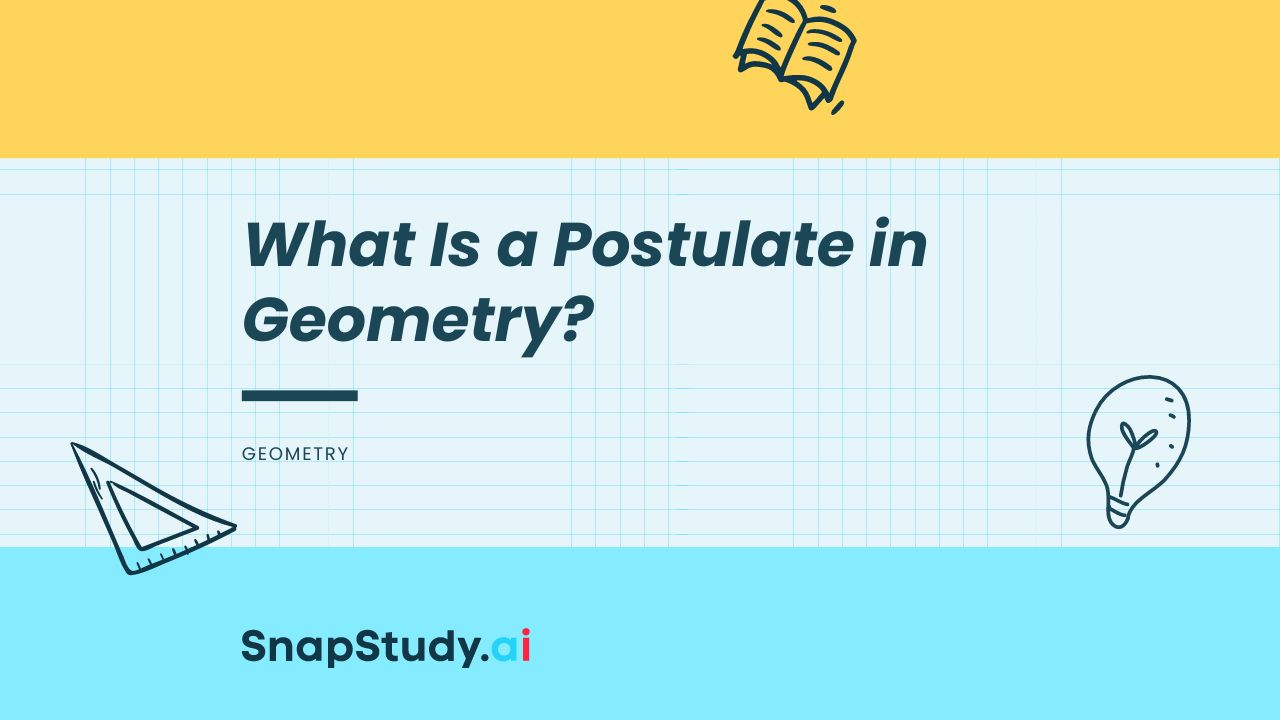Introduction
Geometry is an exciting and intricate field of mathematics that has fascinated scholars for thousands of years. At the heart of geometry are the postulates, the fundamental building blocks that form the basis of all geometric reasoning and proofs.
Understanding Postulates
A postulate, also known as an axiom, is a statement that is accepted without proof. These statements are so basic and fundamental that they are accepted as true without requiring empirical evidence or logical deduction. They are the starting point from which all other geometric concepts and relationships are derived.
Essential Topics Associated with Postulates
1. Basic Postulates
Geometry is rich with several fundamental postulates. The “Line Postulate,” for instance, states that through any two points, there is exactly one line. This postulate is foundational to our understanding of how lines and points interact in a geometric context.
Another example is the “Circle Postulate” which declares that a circle can be drawn with any given center and radius. This postulate forms the basis for our understanding of how circles function within geometry.
These basic postulates are not just arbitrary rules; they form the very foundation of geometric understanding. They help us define and understand the basic concepts of geometry and guide our reasoning when dealing with more complex geometric problems.
2. Postulates and Theorems
It’s important to differentiate between postulates and theorems. While postulates are accepted without proof, theorems are statements that require proof. This proof is derived using the basic postulates as a starting point. Once a theorem is proven, it becomes a tool that can be used as a basis for proving other theorems. The relationship between postulates and theorems is a symbiotic one, with each supporting and building off the other in the advancement of geometric knowledge.
3. Euclidean vs. Non-Euclidean Geometry
The role of postulates becomes even more interesting when we delve into different types of geometry. Euclidean geometry, the form of geometry most commonly studied in high schools, is based on five postulates known as Euclid’s postulates. These postulates have been the cornerstone of traditional geometry for over two thousand years.
However, there’s also Non-Euclidean geometry, which arises when one or more of Euclid’s postulates are replaced with different assumptions. This different approach has led to new and exciting geometrical concepts and theories that have greatly expanded our understanding of the subject.
4. Role of Postulates in Proofs
Postulates are not just theoretical concepts; they have a critical application in the construction of geometric proofs. They provide the starting point for logical reasoning and the establishment of theorems. Without them, we would have no foundation upon which to build our geometric arguments.
Conclusion
Geometry is a vast and complex field, and its postulates are the cornerstones that hold this field together. Understanding these postulates is fundamental to grasping the subject. If you’re struggling with the concept of postulates or other geometric concepts, remember that help is available. Our free AI tutoring app is designed to provide personalized assistance to help you build a stronger comprehension of the subject. By making geometry more approachable and less daunting, SnapStudy can be a valuable tool in your journey to mastering this fascinating subject.





